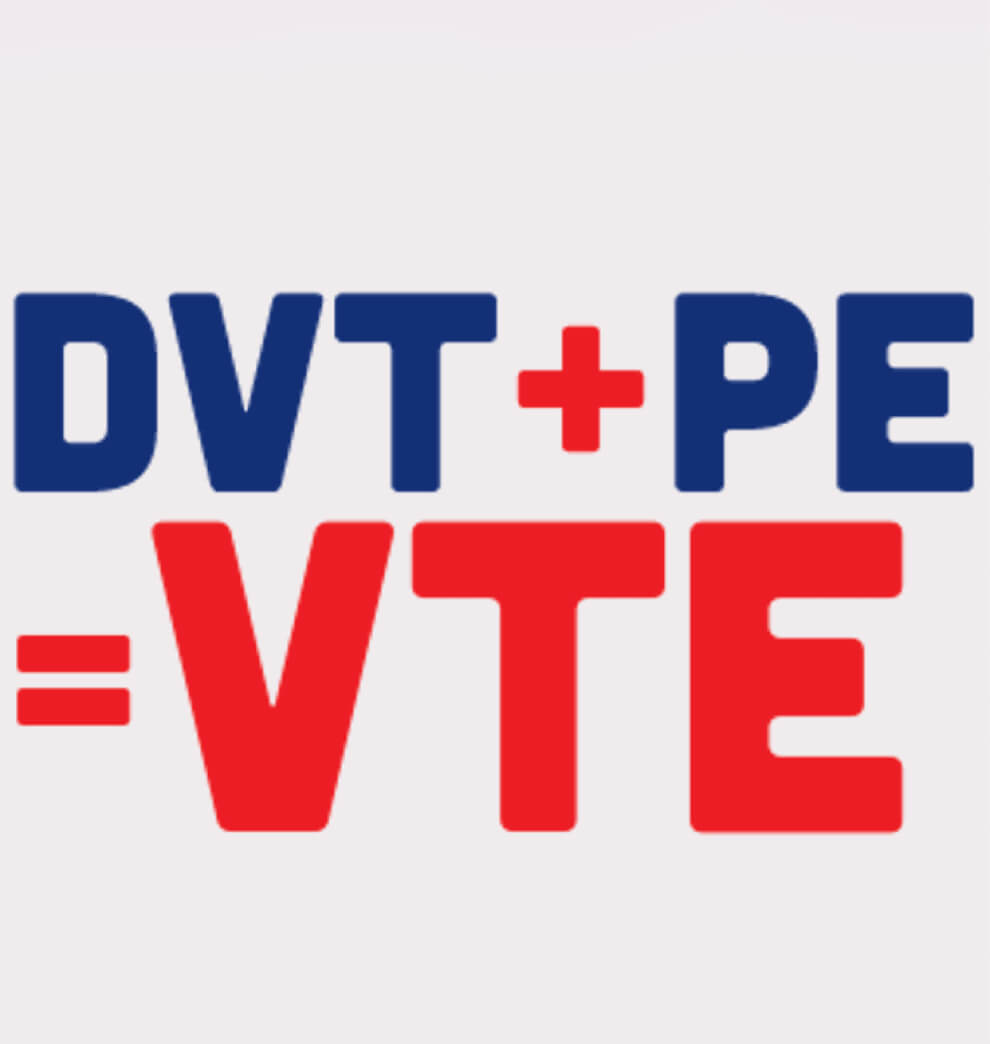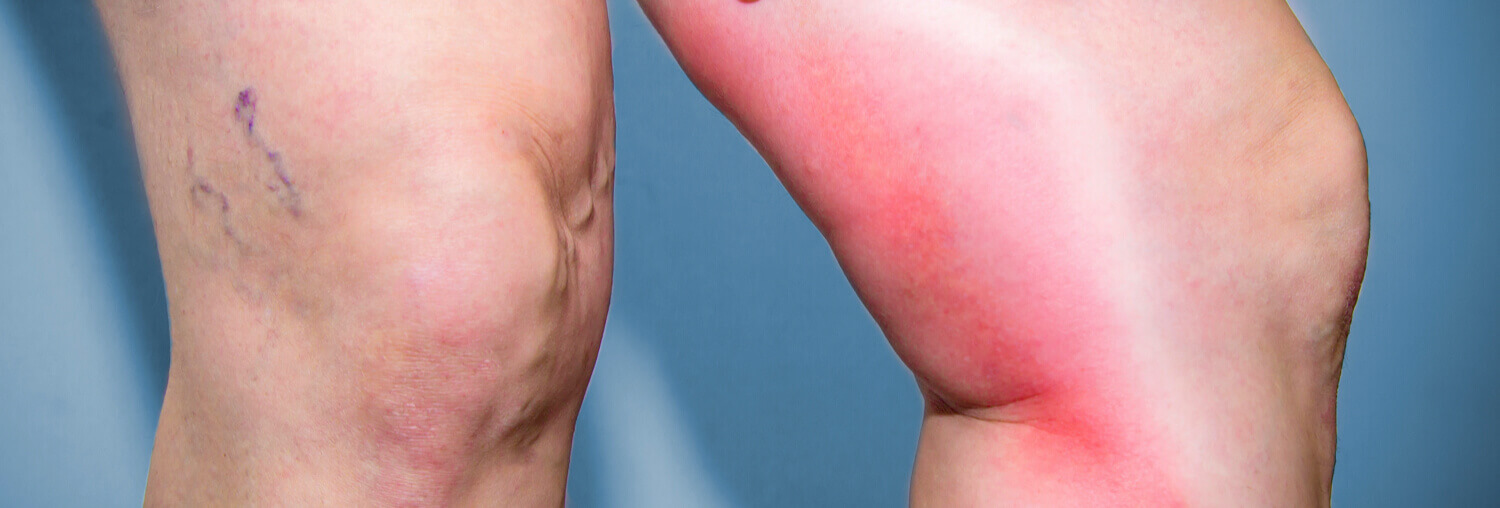Venous Thromboembolism
What is Venous Thromboembolism?
Venous Thromboembolism (VTE) is a condition in which a blood clot forms most often in the deep veins of the leg, groin or arm (known as deep vein thrombosis, DVT). These can travel in the circulation, lodging in the lungs (known as pulmonary embolism, PE). Together, DVT and PE are known as VTE — a dangerous, potentially deadly medical condition.

Hospital-Associated VTE
Being in the hospital is a major risk factor for the development of VTE. Patients are more likely to develop blood clots if they are very unwell, this makes blood more sticky; and/or experience decreased mobility due to bedrest or recovery; and/or or if they experience blood vessel trauma due to surgery or other serious injury.
VTE can occur without any warning signs or symptoms and can go unrecognized and undiagnosed by a healthcare professional. Symptoms that do appear may be associated with either a DVT or a PE.
VTE does not discriminate. It affects people of all ages, races and ethnicities, and occurs in both men and women. Certain factors and situations can increase the risk of developing potentially deadly blood clots. Learn about the risk factors of VTE.

Risk and Prevention
Most hospital-associated VTEs are preventable, and evidence-based prevention strategies are used in hospitals in ‘at-risk’ individuals.
To identify whether a patient is ‘at-risk,’ healthcare professionals conduct a “VTE risk assessment”, which is a questionnaire that lists all the risk factors for VTE and asks for information about a patient’s age, medical history, medications. This information is then used to decide a patient’s potential risk (e.g., high, moderate or low risk) for developing hospital-associated VTE. In order to prevent hospital-associated /VTE small doses of blood thinners and/or leg compression devices are used.
If you are admitted to a hospital, be proactive and ask for a VTE risk assessment and if you know you are at risk then ask what prevention is being used.
Page References:
1 Jha AK, Larizgoitia I, Audera-Lopez C, Prasopa-Plaisier N, Waters H, Bates DW. The global burden of unsafe medical care: analytic modeling of observational studies. BMJ Qual Saf 2013; 22;809-15. Retrieved from: http://qualitysafety.bmj.com/content/22/10/809.full.pdf+html
2 US Department of Health and Human Services. Surgeon General’s Call to Action to Prevent Deep Vein Thrombosis and Pulmonary Embolism 2008. Available at: http://www.surgeongeneral.gov/topics/deepvein.
3 Heit, JA. Poster 68 presented at: American Society of Hematology, 47th Annual Meeting, Atlanta, GA, December 10-13, 2005.
4 Cohen AT, Agnelli G, Anderson FA, et al. Venous thromboembolism (VTE) in Europe. Thromb Haemost. 2007;98:756-764.
5 House of Commons Health Committee Report on the Prevention of Venous Thromboembolism in Hospitalised Patients. www.publications.parliament.uk/pa/cm200405/cmselect/cmhealth/99/9902.html.
6 Medscape. Medscape General Medicine. 2004:6(3)5.
7 According to data from the international studies (Voskanyan J.E. et al, Organization standardized prevention of venous thromboembolic events in a multidisciplinary hospital, Surgery Volume 08-N2-2006, on average the frequency of hospital deaths from PE stands at 0.3%



